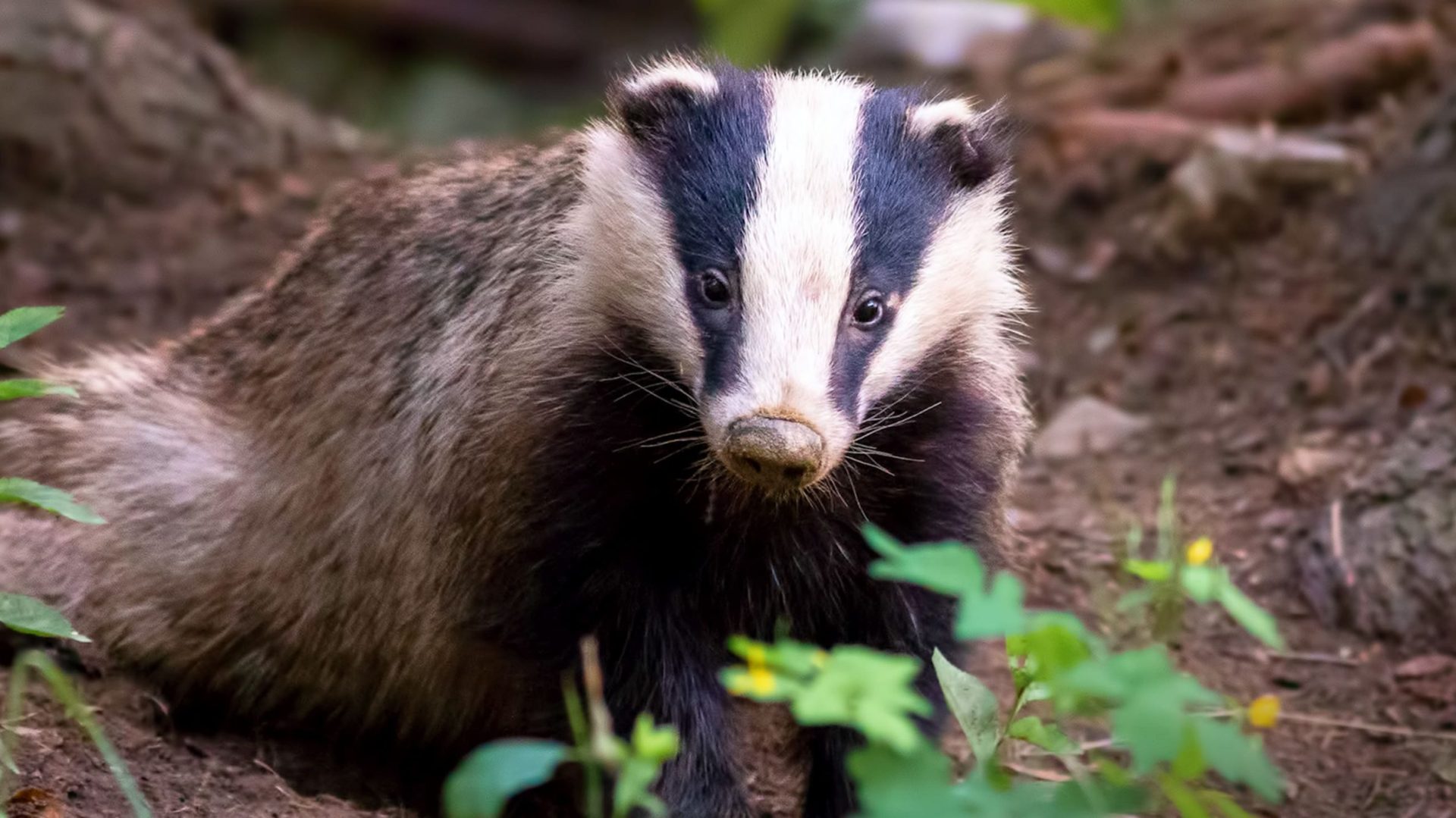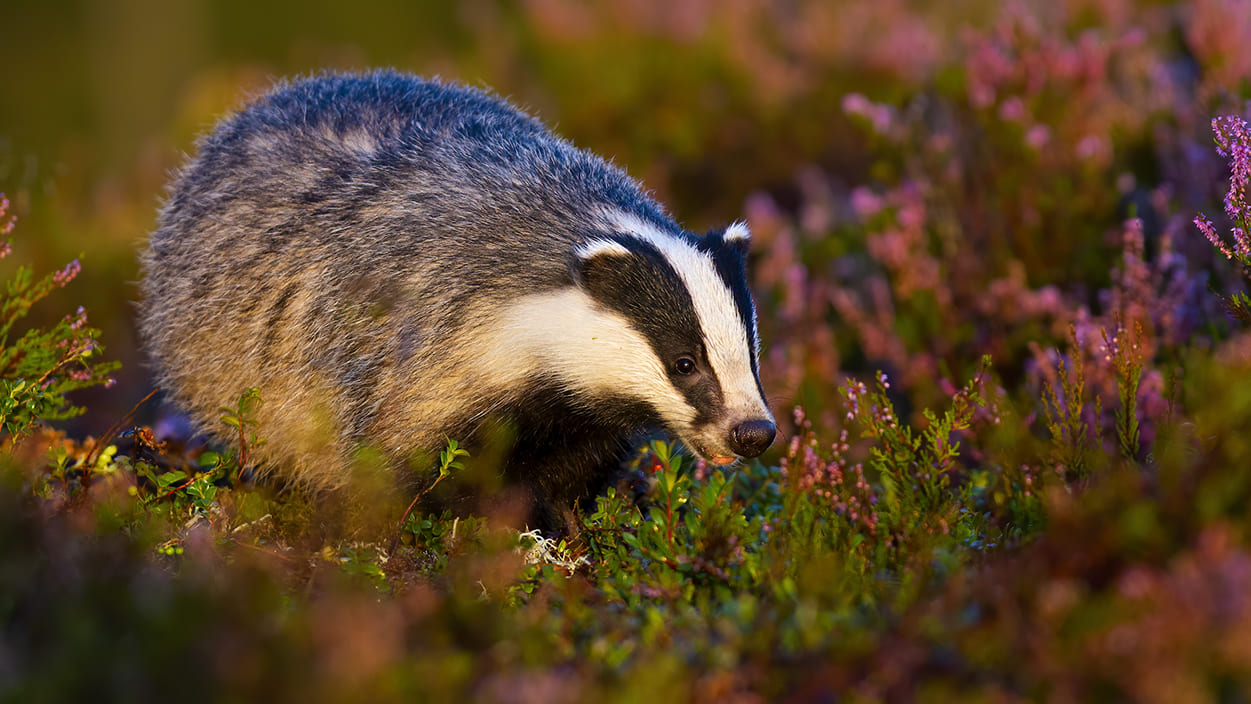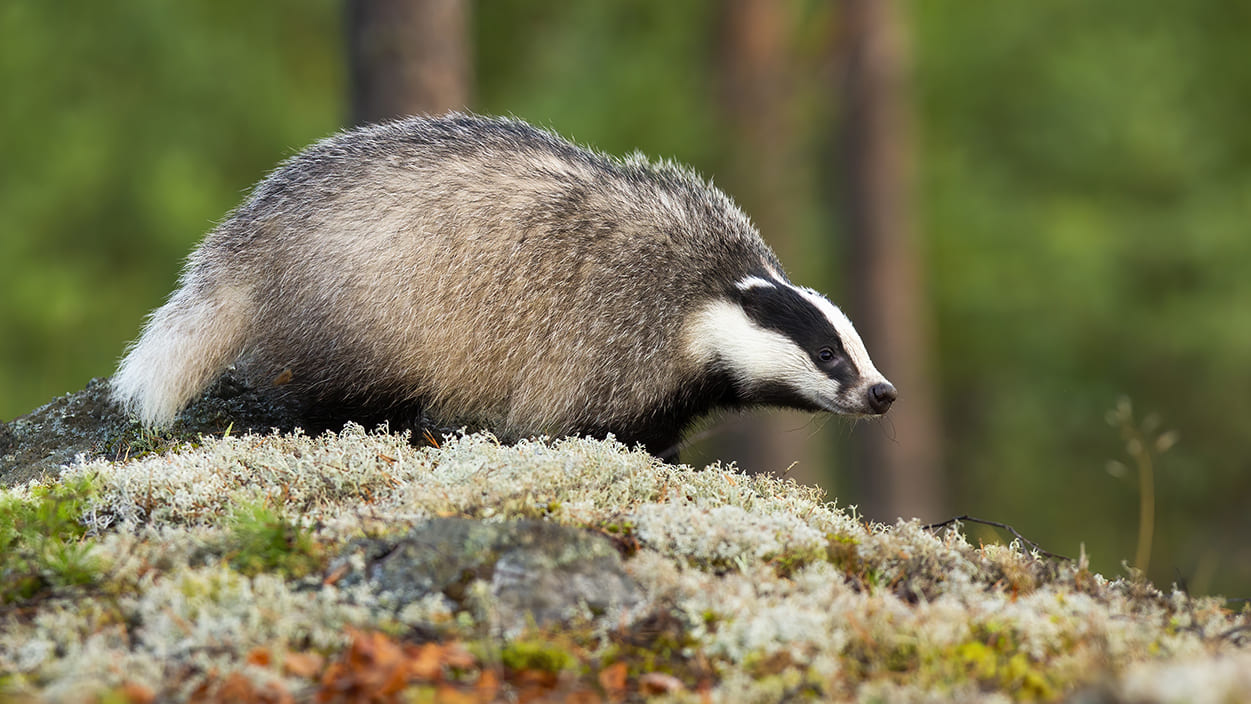Although being of medium size means it may resemble a dog, its white head covered with two black stripes from the tip of its snout to its ears is unmistakeable: it is indeed a badger (Meles meles). If you are still in doubt, its short white tail is also a distinctive feature of this species that exists in the wild in Portugal and throughout Europe.
Despite being a species that can be found all over the country, it is not always easy to spot badgers, as they are most active during twilight hours and at night, when they come out to feed, play and breed.
Badgers are carnivores, but in truth their opportunistic nature when it comes to food makes them omnivorous, eating whatever is available to them each season. Roots, mushrooms and fruit – such as olives, acorns, blackberries, and figs that they collect at ground level – are part of their diet, which also includes arthropods, insects, and worms (Lumbricus terrestris). They also hunt small birds, reptiles and amphibians.
Owing to its strong, 25 millimetre long claws, the badger is an accomplished digger and builder, and is adept at creating extensive and complex burrow systems that are used as a home for its family, often for several generations. These burrows are known as a sett, and this is where they breed and live.
At just over a year old, between 14 and 15 months, badgers reach sexual maturity. They can mate at any time of year, but it is most common for mating to take place from February to May and July to September. In order to increase the chances of survival of their young, females have “a trick up their sleeve”: they are able to delay embryo implantation for up to ten months, so that the birth coincides with spring, which has better weather conditions and is when a greater quantity of food is available. Gestation is short, only seven weeks, and each litter produces two to three offspring, which remain close to the family unit.
Badgers typically dig their setts on soft, sandy ground. Their strong, short claws do most of the work, but with the help of the badger’s snout. In order to prevent soil entering their ears, badgers are able to close them while digging.
In addition to their setts, badgers also dig latrines – pits a few centimetres deep, where they deposit their droppings. This is their way of marking their territory and observing the latrines gives us clues as to the area in which they usually move. In Portugal, the average territory of a badger ranges from around four to five km2, but it may be much more extensive: in Poland, territory belonging to a badger measuring 24.4 km2 has been recorded.





